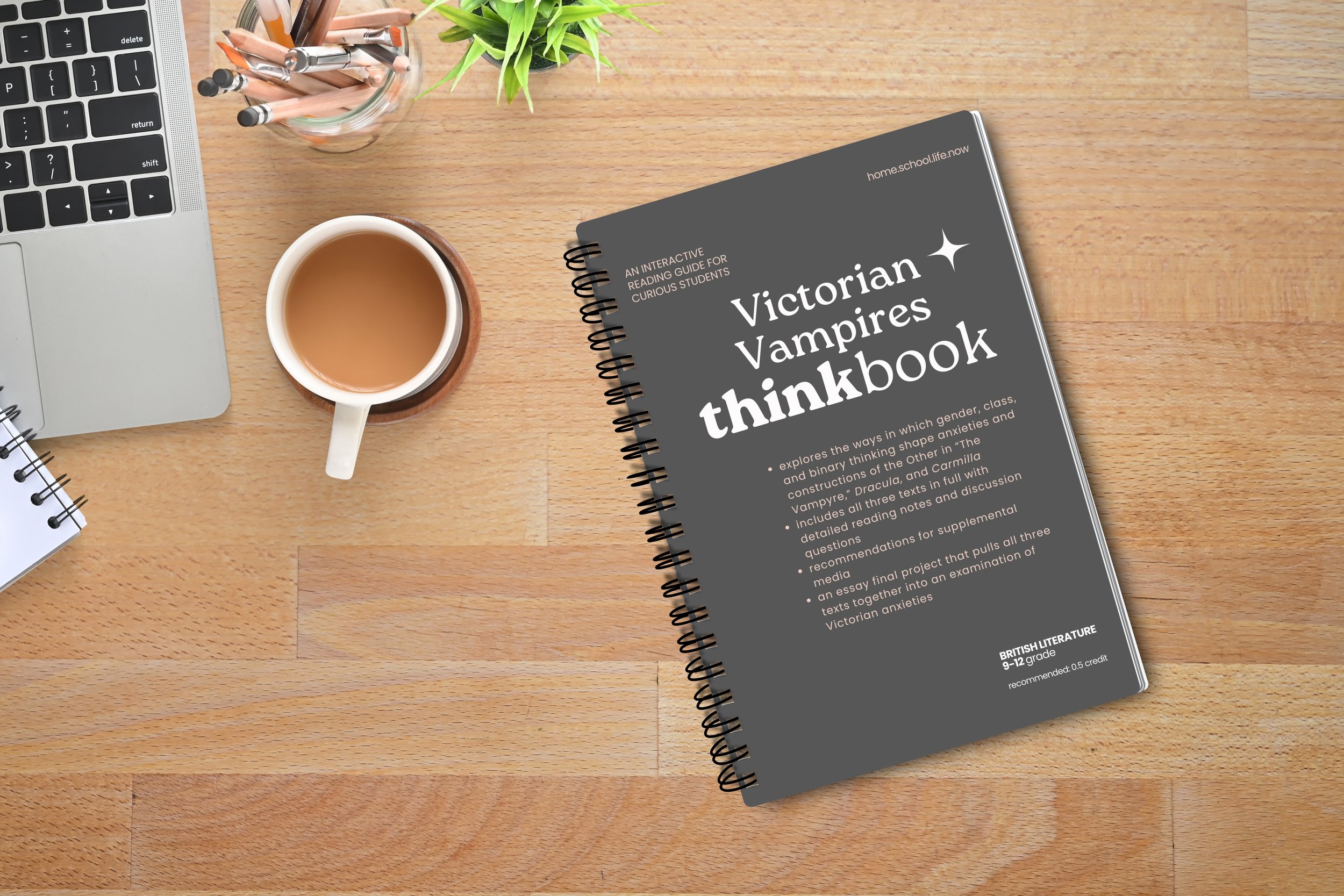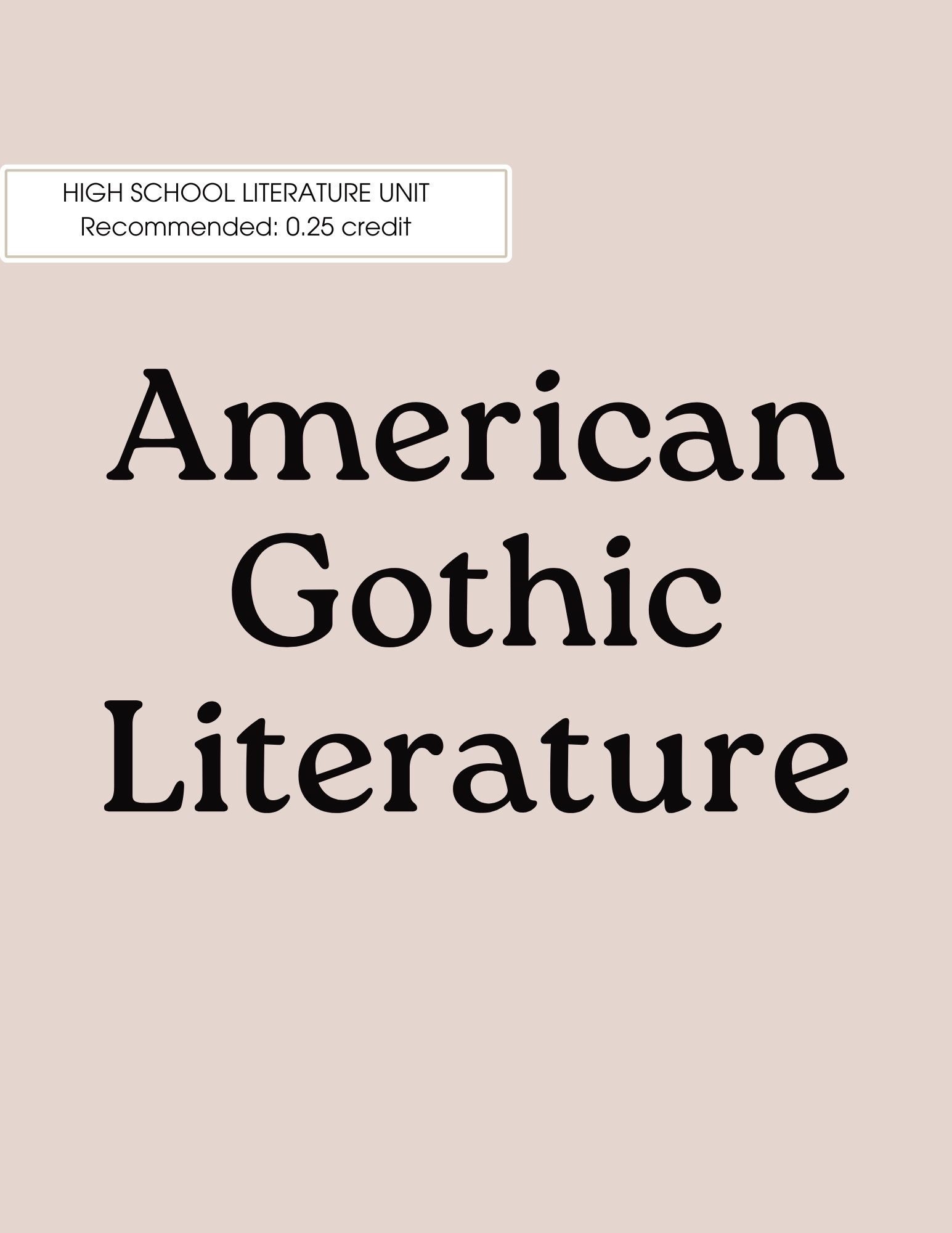 Image 1 of 9
Image 1 of 9

 Image 2 of 9
Image 2 of 9

 Image 3 of 9
Image 3 of 9

 Image 4 of 9
Image 4 of 9

 Image 5 of 9
Image 5 of 9

 Image 6 of 9
Image 6 of 9

 Image 7 of 9
Image 7 of 9

 Image 8 of 9
Image 8 of 9

 Image 9 of 9
Image 9 of 9










Victorian Vampires (British Literature)
What's inside this literature unit:
Full, annotated-by-Amy texts of "The Vampyre," Dracula, and Carmilla (that makes this a HUGE file, so check the page count before you print it out!)
Discussion questions to guide you through each text
Introductory reading notes on Gothic literature, the origin of the vampire story, and each text
Final project essay
Bonus: Comparative lit movies for each text
What's inside this literature unit:
Full, annotated-by-Amy texts of "The Vampyre," Dracula, and Carmilla (that makes this a HUGE file, so check the page count before you print it out!)
Discussion questions to guide you through each text
Introductory reading notes on Gothic literature, the origin of the vampire story, and each text
Final project essay
Bonus: Comparative lit movies for each text
What's inside this literature unit:
Full, annotated-by-Amy texts of "The Vampyre," Dracula, and Carmilla (that makes this a HUGE file, so check the page count before you print it out!)
Discussion questions to guide you through each text
Introductory reading notes on Gothic literature, the origin of the vampire story, and each text
Final project essay
Bonus: Comparative lit movies for each text
Before there were sparkly Twilight vampires having creepy babies and sassy teen vampire slayers, there were blood-sucking fiends terrorizing the good middle class citizens of Victorian London.
The Victorians didn’t invent vampires, but they invented the literary vampire, a complex creature whose particular vices and evils reflected the Victorians’ deep-seated fears and anxieties. In this unit, we’ll be examining three of what we could call the Ur-Texts of vampire lore: “The Vampyre,” a short story that gives us the first suave European vampire; Carmilla, a novella that introduces the female vampire; and, of course, Dracula, the novel about the western world’s best-known vampire. Through these readings, we’ll look at Victorian intersections of gender, class, and power in the 19th century world.
Credit recommendation: 0.5
Placement recommendation: This is a high school level unit, designed for students who are already familiar with the basic elements of literature (plot, character, theme, setting, etc.) and who are comfortable applying those skills to texts. Like most high school level curricula, it includes works that could be rated M for Mature. If mature content is a concern for you with your student, I encourage you to preview texts to asses your personal comfort level. (I read these texts with my own high school student and teach them in high school classes, but comfort levels can be very personal things.) This is a completely secular program.
For secular homeschoolers who want a fun, decolonized, rigorous way to homeschool high school and middle school, home/school/life’s Deep Thought is the progressive high school curriculum that does the academic heavy lifting so that you can enjoy the fun stuff. Unlike other high school curriculum, home/school/life’s Deep Thought curriculum teaches students how to learn, not just what to learn and makes big academics surprisingly fun for the whole family.
All curriculum materials are digital and downloadable. Because of this, all sales are final. If you have questions, please ask before you buy.








